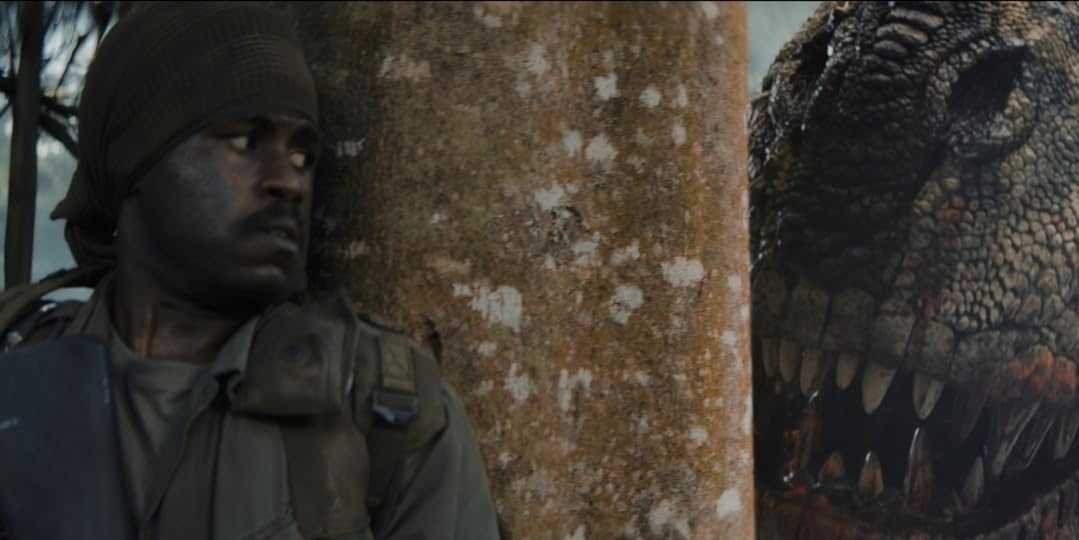Written and directed by Luke Sparke, Primitive War is the upcoming survival action epic based on the cult novel by Ethan Pettus. The film, set during the Vietnam War in 1968, follows an elite U.S. recon unit—Vulture Squad—on a perilous mission deep in the jungle to track a missing Green Beret platoon. But the real danger isn’t human: they find themselves hunted by prehistoric predators. Starring Jeremy Piven (Entourage), Tricia Helfer, Ryan Kwanten, and Nick Wechsler, the film is scheduled for release on August 21, 2025, in the United States.
WHERE WAS PRIMITIVE WAR (2025) FILMED?
The movie Primitive War takes place in war-torn Vietnam, but most of it was shot in Gold Coast, Queensland, Australia, from April 8 to May 16, 2024. This beautiful but wild part of Australia was the perfect setting for the movie’s dense jungles and remote valleys.
GOLD COAST, QUEENSLAND
The Gold Coast is famous for its golden beaches and world-famous surfing spots. It also has huge areas of dense rainforest, national parks, and rough terrain, which makes it a great place to show how wild Vietnam really is.
In a special interview with Kaiju United, Sparke talked about how important it was for the production to be true to life:
“We made a conscious decision to go film this on location, to make everything as real as it can be… The soldiers are stuck in a valley in the middle of nowhere, and they can’t get out. So, we had to go out and shoot that in an actual remote valley.”
NO GREEN SCREENS, ONLY REAL SETS
Luke Sparke, the director, chose real jungle settings over studio backdrops on purpose to make the experience feel more grounded and real.”We made a conscious decision early on to film this on location, to make everything as real as it can be,” Sparke shared in an interview. “There was nothing green-screened, to my knowledge, in this movie. Everything we shot was real—the Russian bases were built for the film, the jungles, the valleys—it’s all real.”
This decision led to the use of real valleys and remote locations, rarely (if ever) seen in film before. With Wade Muller as director of photography, the crew got wide shots of Queensland’s thick rainforests, quickly changing weather and dangerous hills, which made the survival experience in the movie seem more real.
CHALLENGES OF FILMING IN REAL LOCATIONS
The rugged terrain and unpredictable weather of the Gold Coast proved both a blessing and a logistical nightmare. During one week of filming, heavy rain turned critical roads to mud, stranding the crew in hard-to-reach areas. At one point, massive eight-wheeled military trucks were brought in to transport cameras and gear uphill through the mud. “There were days when the entire production nearly shut down,” Sparke recalled. “But we pushed through, and the results were worth it.”
The production required building custom roads and setting up military encampments, all without disrupting the natural environment. Sparke emphasized that even when digital effects were added later, they were grounded in physical elements shot on set—mud, rain, foliage, and all.
EMPLOYING LOCAL TALENT AND INFRASTRUCTURE
The film supported the local economy by employing a mostly Australian crew, with over 200 jobs created during production. This included everything from camera operators and stunt coordinators to costume and practical effects teams. “Australia’s crews are known for their no-nonsense, get-it-done attitude,” Sparke noted. “They were incredible.”
Sparke Films, based in Australia, prioritized collaboration with local production houses, catering services, and set builders, further anchoring the movie within the Australian filmmaking landscape.
THE INSPIRATION: PHANG NGA BAY, THAILAND

While the movie wasn’t filmed in Thailand, some scenes were visually inspired by Phang Nga Bay, a location known for its towering limestone cliffs and emerald waters. The creative team used this visual influence to enhance the look of certain jungle and valley shots, giving the feel of an untouched, dangerous wilderness reminiscent of Southeast Asia’s most dramatic terrains.
Phang Nga Bay is famous for James Bond Island (Khao Tapu) and its floating Muslim village Koh Panyi, but it served here only as creative inspiration, not an actual filming site.
PRACTICAL EFFECTS IN REAL ENVIRONMENTS
Despite its modest budget compared to Hollywood blockbusters, Primitive War leaned heavily into practical effects. Puppeteered dinosaurs like the Utahraptor were physically present on set for interaction with actors—adding visceral realism to the performances. One such animatronic even gave Sparke a scare when it unexpectedly lunged out during a shoot!
“We had a practical Utahraptor created for the film… It actually scared the hell out of me when it popped out during a take!” Sparke admitted.
The production also benefited from military authenticity, thanks to Sparke’s background in costume and art direction for war films like The Pacific and X-Men Origins: Wolverine. He even brought on Captain Dale Dye, military advisor on Platoon and Saving Private Ryan, to help keep military scenes grounded and respectful.
WHY THE GOLD COAST WAS THE RIGHT CHOICE
The Gold Coast’s versatile topography, production-friendly infrastructure, and natural jungle canopy made it the ideal filming ground for a movie like Primitive War. Locations were carefully selected to match the gritty tone of classic Vietnam War films like Platoon and Apocalypse Now, both of which Sparke cites as major visual references.
The crew’s commitment to shooting on real sets, avoiding artificial lighting, and working in challenging environments mirrors the journey of the characters themselves—trapped in a hostile wilderness, fighting for survival.
OFFICIAL TRAILER
Stay tuned to netfilming.com for all the latest updates and filming news.



